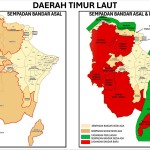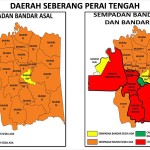Penang redraws urban map after six decades, declares 25 new towns
Penang has redrawn its urban map for the first time in nearly 60 years, declaring 25 new towns and expanding the boundaries of 10 existing ones to reflect the state’s transformation from agricultural landscapes into thriving city hubs.
The sweeping amendment, gazetted on Sept 4, impacts more than 210,000 land titles and 84,000 strata titles across Penang. Chief Minister Chow Kon Yeow said the move was necessary as the state’s population and economy had long outgrown the original town declarations made in 1966.
“Many areas once designated as country land have experienced substantial growth. The state authorities are now responding to this by reclassifying these lands to reflect their urban status,” Chow told reporters in Komtar yesterday.
With the changes, Penang now has 42 towns—17 existing and 25 new. Among the existing towns, George Town, Butterworth, Bayan Lepas, Balik Pulau, Batu Ferringhi, Tanjung Bungah, Air Itam, and Bukit Mertajam will see boundary revisions, while Tanjung Tokong, Jelutong, Gelugor, and Prai retain their current limits.
The new towns span both Penang island and Seberang Perai, ranging from Bayan Baru, Batu Maung, and Sungai Ara to Seberang Jaya, Alma, Bandar Cassia, and Tasek Gelugor. Notably, Batu Kawan—home to the state’s Silicon Island industrial expansion—has also been incorporated as an urban zone.
Chow said the reclassification would reshape Penang’s administrative and economic landscape through more efficient zoning, planning, and taxation systems. Property owners, however, will see financial implications as their holdings are upgraded from country to town status.
“For more than 210,000 landowners and 184,000 strata titleholders, these changes will result in higher taxes,” Chow acknowledged. To ease the transition, the state government has postponed new strata property tax rates until 2027, giving over 184,000 strata property owners a two-year reprieve.
The decision is aligned with the Second National Urban Policy (DPN2) by PLANMalaysia, the federal town planning agency. The policy calls for urban classification in areas with a minimum population density of 10,000 and where most residents are engaged in non-agricultural activities.
Chow emphasised that the amendment positions Penang to manage growth more effectively. “Areas once considered rural or village lands, such as Batu Kawan and Bertam, are now integrated into urban zones, reflecting their transformation into bustling hubs of activity,” he said.
By updating its urban boundaries after nearly six decades, Penang aims to ensure its governance, infrastructure, and economic strategies remain in step with the state’s rapid development trajectory.
Join our Telegram Channel now to receive instant update on Penang latest projects and property news














